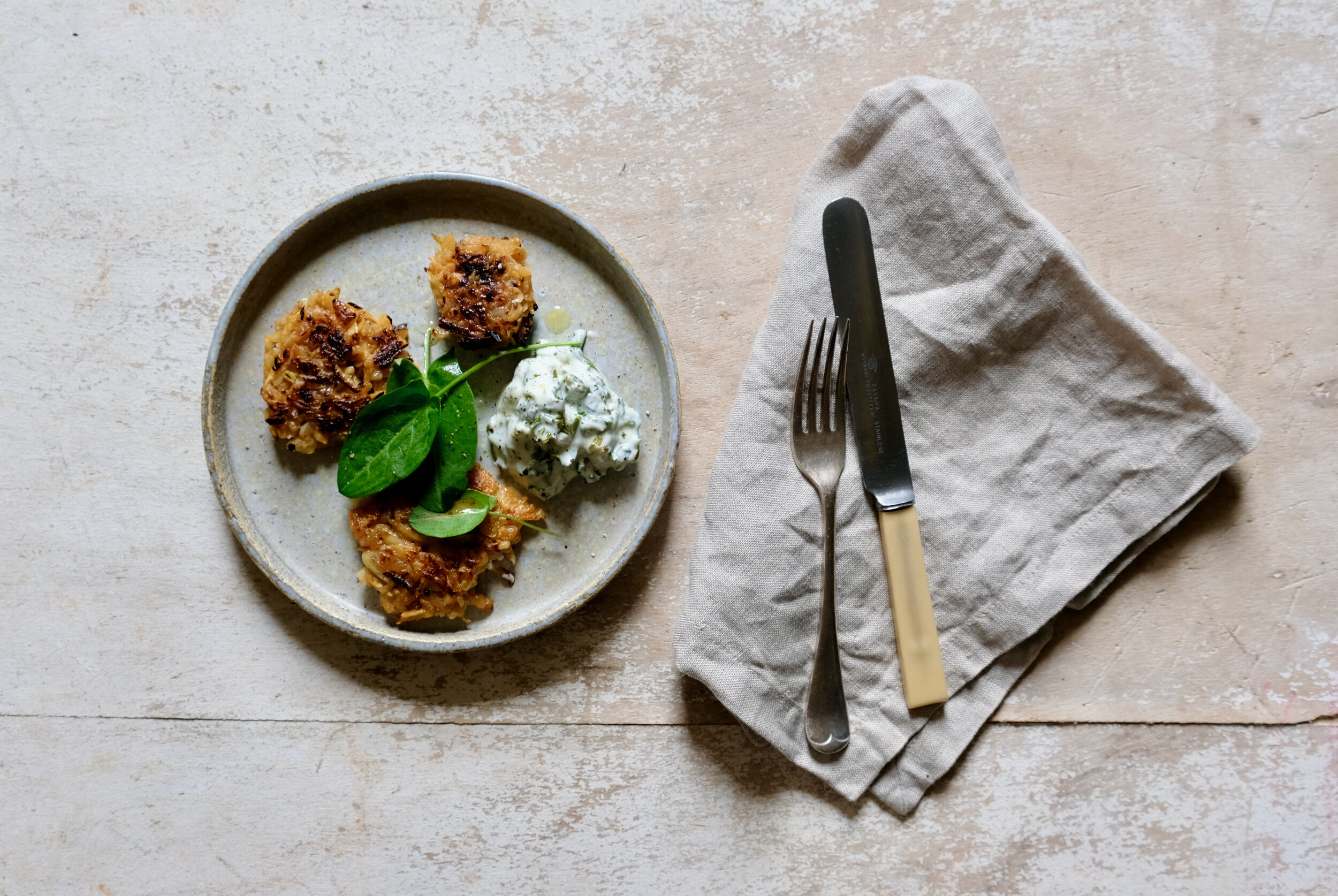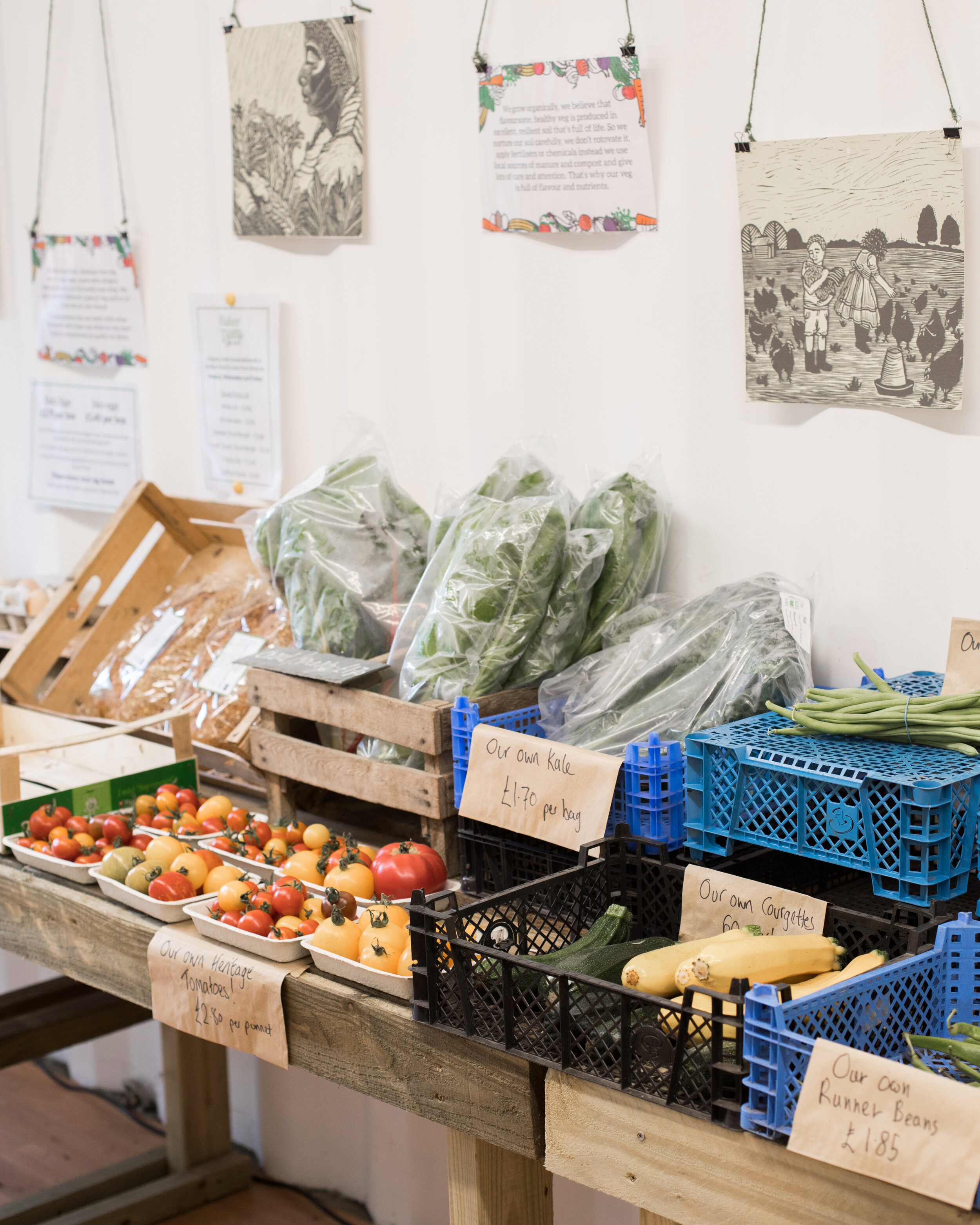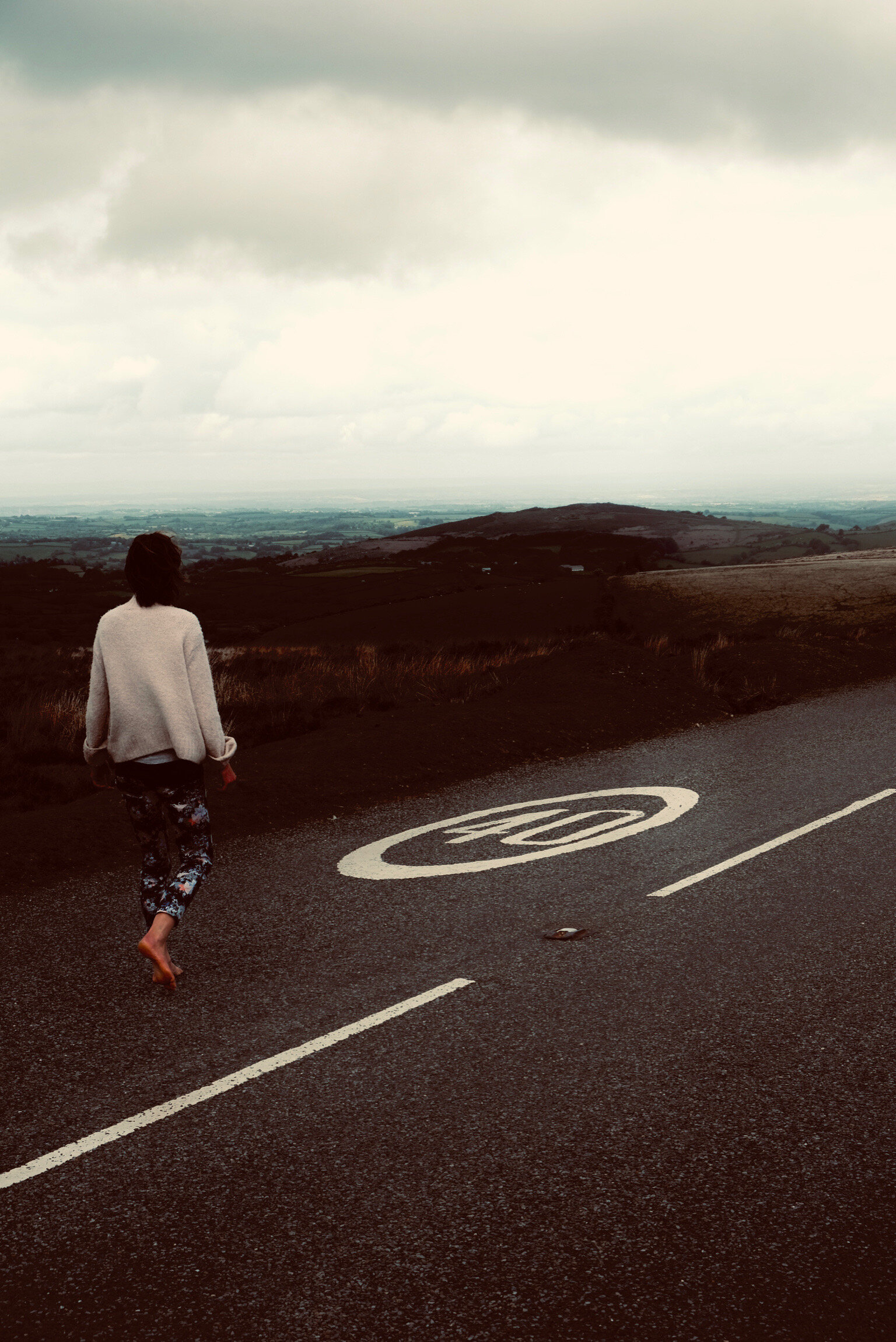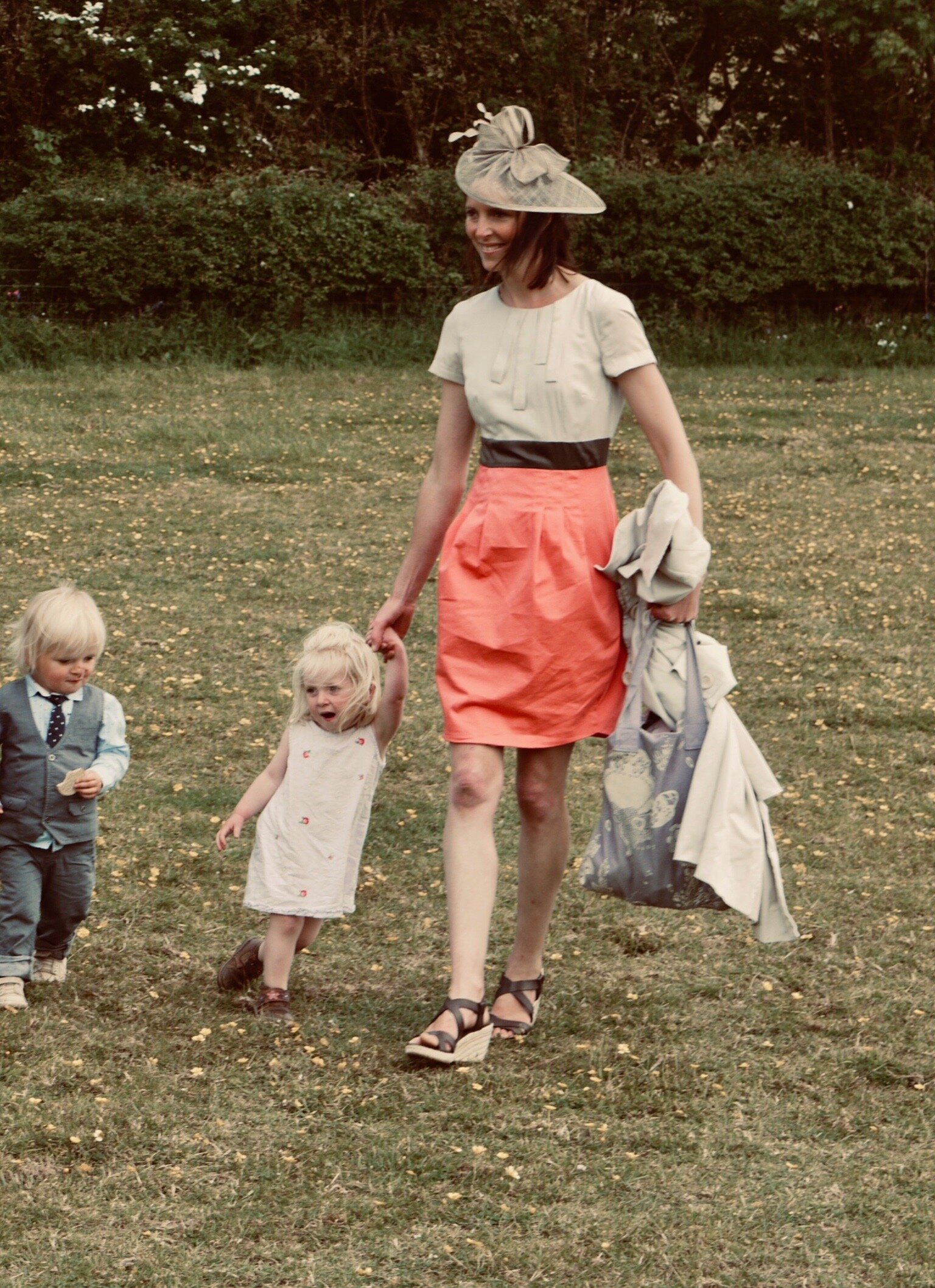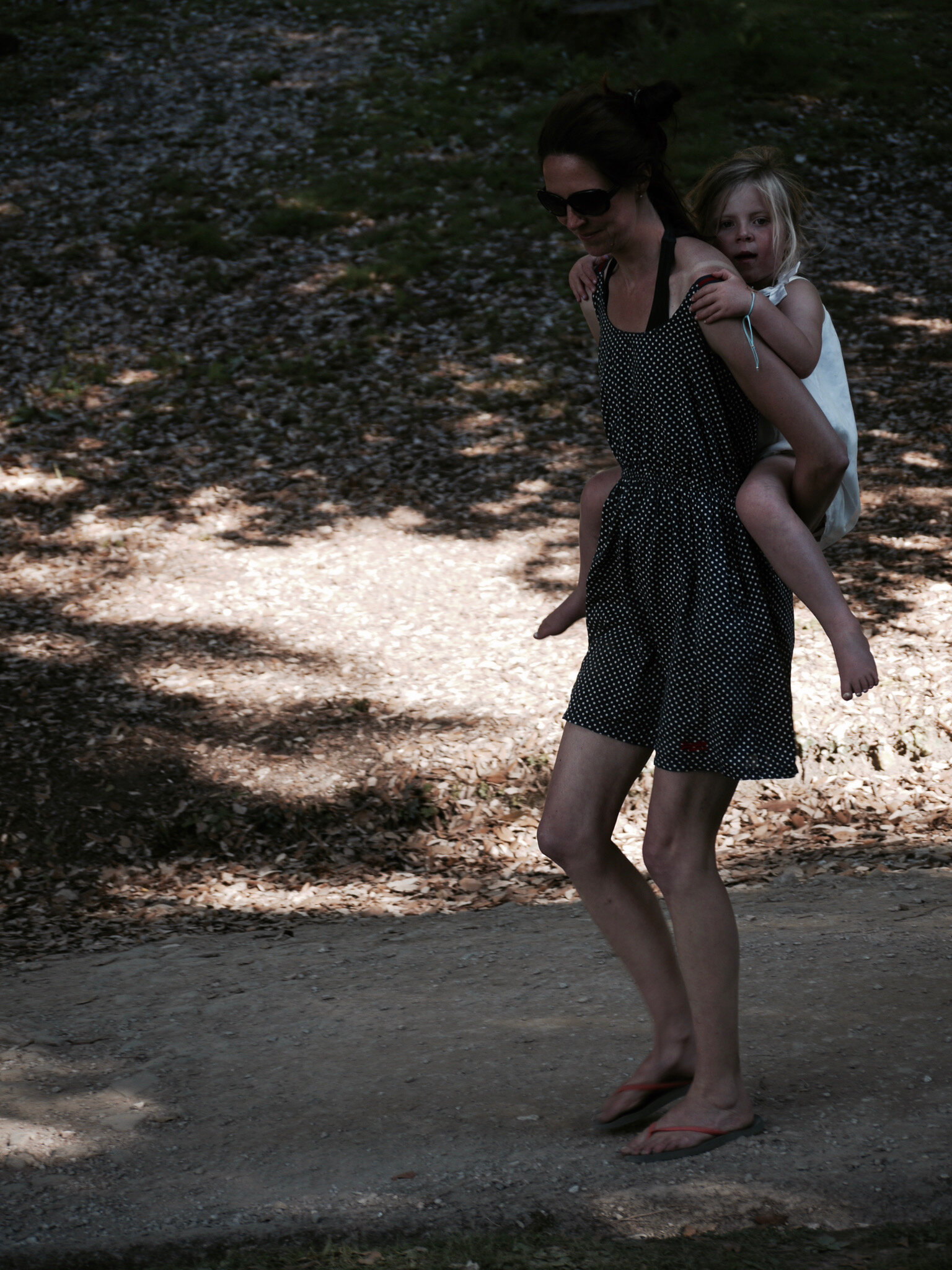It’s been a year since I bought any new clothes. Like many of us, I’ve been waking up to the impact my buying habits have on people and the planet. As someone who has always bought a significant proportion of my clothes second hand, I thought the footprint of my clothes purchases wouldn’t be too harmful. Inspired by the growing community of people opting out of buying new, I decided to challenge myself to a year of No New Clothes. Easy, I thought. I wonder if I’d normally buy anything new in a year anyway?
As project No New Clothes began, I had a cull of my wardrobe, charity-shopping a huge number of items that I was clearly not going to wear any more (think miniskirts from my teens … I recently turned 40 …). This paring back in itself felt reliving, reducing the array of choice which can overwhelm, and lead us to what feels like a ‘simpler’ option of buying new.
As the year progressed, I realised that although I like to think my wardrobe hinges around a few ‘sustainable’ items of clothing, the reality is that there is a lot of other clutter, purchases made quickly, cheaply and without much consideration to the production processes behind them - a cheap blue t-shirt to go with an expensive pair of jeans; cheap tights to accompany a beautiful hand-made skirt. Fast ‘fringe’ pieces to accompany the ‘sustainable’ staple.
It felt as though the lines between my perception of ‘need’ and ‘want’ had blurred, and that I had a blind spot in terms of how I assessed the social and environmental impacts of my purchases: as long as I buy plenty of second hand or ‘sustainable’ clothing, surely it doesn’t matter if I throw in a few more quick and easy fast fashion items?
The journey of the past year has taught me a lot, not least that the reality of my buying habits don’t neatly match up to my perception of them. It took for me to stop buying new completely, to sit back and observe, before I woke up to the reality of how I buy clothes; a habit that I want to change.
So what’s the problem with fast fashion? Let’s pause for a moment to consider these pretty startling statistics:
The fashion industry is the second-largest polluter in the world, after the oil industry
Nearly 70 million barrels of oil are used each year to make the world’s polyester fibre, which is now the most commonly used fibre in our clothing. It takes more than 200 years to decompose
The average consumer bought 60% more clothes in 2014 than in 2000, but kept each garment for half as long
Garment workers tend to earn 1-3% of the retail cost of an item of clothing
I’m sure many of us have a gnawing sense that the gloss and sheen of the clothes we buy bears little resemblance to the reality of how fast fashion works (despite the best efforts of marketing campaigns), but reading more into the actualities of the fashion industry has left me feeling pretty cold. How have we created a culture in which we can become so detached from the stories behind the clothes we wear? Where we are able to persuade ourselves it can’t really be that bad, especially with infrequent (or in my case, far more frequent than I realised) fast fashion purchases?
The ease with which we can make a purchase - a quick click on a website - and the excessively low costs of fast fashion mean we are able to avert our eyes from the reality of the costs behind our purchases. We don’t need to research, weigh up and consider for an item of clothing that might cost less than the sandwich we have for lunch. We can forget about the human and environmental stories behind the clothes, just as we justify our purchases on the basis that if we don’t get much wear out of the item it doesn’t really matter because it was so cheap.
And yet, it does.
One more statistic ..
It’s clear that the state of the fast fashion industry, fuelled by multinational powerhouse companies, is pretty appaulling, but what signs are there of positive change?
An ExoTextile survey from the summer found that “50% of UK consumers want sustainability in fashion” and that more than a third of women want to cut down on the amount of clothes they buy. The survey references C-19 lockdown as invoking a greater interest in the provenance of what we buy, extending beyond what we eat to other lifestyle choices including what we wear.
This inclination to peel back the layers of the clothing industry and take a closer look at the impact clothing purchases have on the planet is what led me to Marazul, a Cornwall-based company that aim to make the production of clothing a positive process.
Over breakfast in the farmhouse here at Botelet, I was lucky enough to hear the story of how Harri Baylis founded Marazul, and has continued to shape this small scale independent company with values of sustainability at its heart.
Marazul evolved out of an initial jumpsuit design that Harri dreamt up whilst travelling in India, scribbled down on paper and created with a local tailor, carefully working together to choose the fabric and refine the functional yet femine design. At the time, the intention was solely to produce a simple, practical jumpsuit - big pockets, easy on and off, space for the body to breathe in a hot country - suitable for travelling. Harri found that she was asked regularly about the jumpsuit by fellow travellers curious to know where to buy one, but at this stage it was still a personal project.
From India, Harri returned to New York but soon made the decision to leave the intensity of city life for a more laid-back lifestyle in Central America. Whilst living in Costa Rica, Harri continued to be asked about the jumpsuit, and gradually the idea of creating clothes to sell began to take shape.
From the outset, Harri wanted to make clothes with a sustainable soul. The original jumpsuit was steeped in stories - from the women who hand-dyed the fabric, to the tailor who helped bring the design to life. Continuing the narritive, making sure that these stories were heard and valued within the pieces, was crucial. Although she had never worked in fashion before, Harri comments that she had “always been obsessed with fabric, texture, shapes and how they work on people”. This desire to design, in tandem with a consciousness about the environmental and social impacts of her business, led Harri to create her own template for producing sustainable clothing.
Having relocated from Costa Rica to Cornwall, the first pieces Harri created through her new Marazul label were linen jumpsuits; but rather than rushing to churn them out and begin selling she decided to take her time, reflecting on how to maximise the sustainability of each stage of the process. “If you want to create something organic, then you have to create it authentically, you can’t force it on the world.”
Harri wanted Marazul clothes to be made to last, using robust fabrics and stitching techniques. The signature design - functional, with a feminine edge - reflects a timeless aesthetic which makes the jumpsuit just as suited to wearing at the beach, dressed up for evening occasions or simply digging the vegetable patch. This versitility increases opportunities for use, in contrast to clothes that might sit in the wardrobe almost untouched except for rare outings. The intention was for the jumpsuits to be used, to be worth making, and worth investing in.
In terms of production, Harri was committed to only using natural fabrics and dyes, with no plastics or chemicals. She travelled to Bali and found an eight woman production house whose values aligned with her own. “I’ve been very lucky with how the designs are interpreted and made” she comments, explaining that Marazul clothes are all hand-made using linen, hemp or cotton canvas, and hand-dyed.
The process of creating a Marazul piece begins with a sketch, the detail and measurements are worked up then sent over to Bali. Even at this stage, Harri is mindful of minimising waste, acknowledging that if her designs don’t ‘work’ as she envisaged, it’s a costly and wasteful process - financially and environmentally - so a lot of time goes into getting the detail right.
This careful, considered approach to the production of Marazul clothes contrasts sharply with fast fashion in which garments are churned out at top speed to meet the latest trends, with little value placed on longevity or the environmental and social impacts. Fast fashion embraces a business model in which success is measured in terms of how much is produced and sold, and how quickly. ‘Made fast’ rather than ‘made to last’ has costs, even if not to the decision-makers in the boardroom.
Harri purposefully orders Marazul clothes in small quantities with the intention of creating a cycle of selling out, restocking and selling out again, to guard against over-ordering. “I can’t stand the thought of unsold stock” she comments; a significant counterpoint in company values to the 2018 revelation that Burberry had burned £30m worth of unsold stock.
The Marazul approach also leaves space for customisation of garments; Harri welcomes conversations with customers about her clothes, some of which lead to design alternations which in turn increases their wearability, longevity and value. If someone is going to invest in a Marazul piece, Harri wants it to be with them for life.
Clearly there is a major difference between running a small, independent clothing label as opposed to a multinational company. Yet both ultimately make choices about how they manage the same processes - design, textile acquistion, dyeing, tailoring, transportation, marketing, sales, packaging. Although the scale may be staggeringly different, arguably the bigger the company the greater the opportunity to slice off just a bit of the profit and reinvest it back into improving the social and environmental footprint.
The principles behind the way companies like Marazul operate can surely offer tangible examples of how clothes can be made more sustainability, even if issues of scaleability come into play. The essence of a more sustainable approach seems to be a commitment to reflecting on the social and environmental dimensions of each stage of the process. This neccessarily involves slowing down the pace and searching out the stories which reveal the real impacts of creating the clothes we wear.
And this is where we come in. Because if we are prepared to buy fast fashion, then fast fashion will be created for us. If we want cheap, plentiful clothing - in such vast quantities that we lose track of what we have, buy items that are worn once or twice (or let’s be honest, sometimes never) - then it seems that the world will continue making this for us. But just as greater international regulation of the fashion multinationals can help limit the detrimental impacts of clothing production, so we need to take responsibility for our choices regarding how much and what we buy.
Harri notes that during lockdown there was a surge of interest in Marazul, fuelled by an increasing desire to embrace values of sustainability in what we wear. “People are becoming more mindful of their buying choices. They want to know the story. You invest in being part of that story.”
Alongside global initiatives aimed at holding fast fashion brands to account - such as the Fashion Transparency Index - social media, for all it’s potential for negativity and to fuel fast fashion, is also awash with examples of positives stories; individuals, companies and collectives that are choosing to reject fast fashion, unearth the stories behind what we wear, and celebrate the second hand, the repurposed, the sustainabily made.
The concept of community these days is fluid, no longer simply rooted in georgraphy, but also representing the collective interests and values of disparate individuals and groups. Through digital as well as in-person communities we are able to listen, learn and share. From the uniform sale at our local primary school, to clothes-swap evenings with friends, blogs and yes social media posts that have led me to companies such as Marazul, I for one have been inspired to change the way I buy and wear clothes as a consequence of those connections.
Through our communities, we have the opportunity to understand how our clothes are made, opening our eyes where for so long the reality has been out of sight. We can cultivate interest in the sustainability of what we buy, giving a leg-up to smaller brands such as Marazul, and create space for individually small yet collectively powerful voices to be heard by bigger companies. We can reflect upon and re-shape our values, and how they interplay with our actions. We can pay attention to the stories behind what we wear. Yes, stories can be manufactured, but via community we have the chance to dig deeper, to call out, to demand transparency and to celebrate initiatives that are founded upon compassion and respect for people and the planet.
For Harri, it has been heartening to see the sense of community that has grown around the design, production and ethics of the clothing she creates. “We have been used to a 2D approach to clothes and that is not where we need to be. We need to go 3D, we need the full story.”
It seems to me that the essence of buying clothes more sustainably lies in taking the time to research, enquire, and remember that our choices as a consumer represent part of that story; it doesn’t end with us. How we wear our clothes (do we need a vast wardrobe, or keep it smaller and embrace the repititions, mixing up and repurposing of what we own?), how we wash our clothes and pass them on - these too form part of the story of how ‘sustainable’ an item of clothing ultimately becomes.
As we finish breakfast I ask Harri her aspirations for the future of Marazul. “I want to continue creating beautiful clothes, with a small footprint, that people want to wear. And to work with more brands to create uniforms - reducing the wastefulness around what we wear for work.”
Which leads me to consider, now that my year of No New Clothes is up, where do I go from here? I’m surprised to feel reluctance rather than a rush to buy new. Putting the brakes on has been more revealing than I anticipated. As an ‘all or nothing’ kind of person, I find it easier to stick to a clear set of (even self-imposed) rules; the idea of any type of purchase being available to me now feels overwhelming. Yet perhaps I can harness that trepidation and make the choice to only buy new when ‘sustainable’, try to have greater awareness of ‘want’ vs ‘need’, and not lose sight of the vast array of options that I’m lucky already exist within my wardrobe.
There is no specific blueprint for what makes clothing ‘sustainable’, but enquiring about the fabrics and dyeing processes, who makes the clothes and their workplace conditions, how minority groups are represented, the transportation and packaging choices that are made, whether clothes are made to last (and if they actually do), and considering their versatility - these are the questions that I want to underpin my choices with the clothes I buy.
Yes, sustainable clothing costs more than fast fashion, and the expense of an item is not necessarily indicative of sustainable credentials; we need to delve deeper, seek out the stories, slow ourselves up; which, let’s be honest, needs to happen if we want to see an end to the devastating impacts of fast fashion. Buying less and buying second hand can help to free up the option of investing in sustainable clothing when we do choose to buy new. Not forgetting that the most sustainable item of clothing is the one we already own.
With no sense of urgency, I think the first new clothes I buy will be an update to my threadbare undie department which hasn’t had an easy ‘second hand’ fix during the past year. I’m going to check out the small fairtrade company that Harri recommends, Pico. Considered clothing, inspired by community - I’m going to make this the next chapter of my story.

